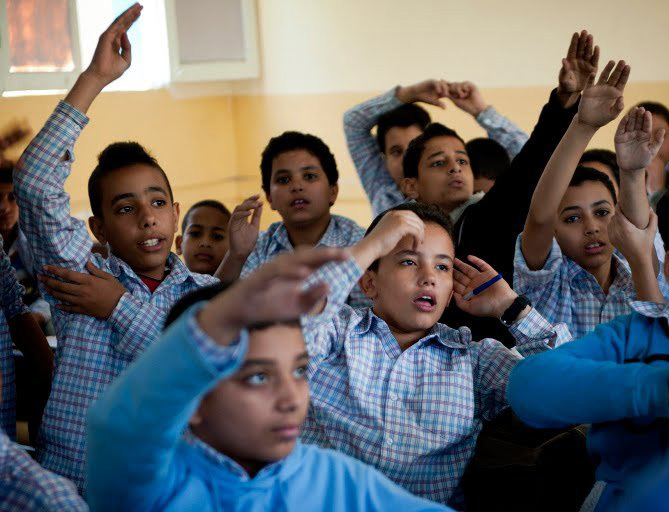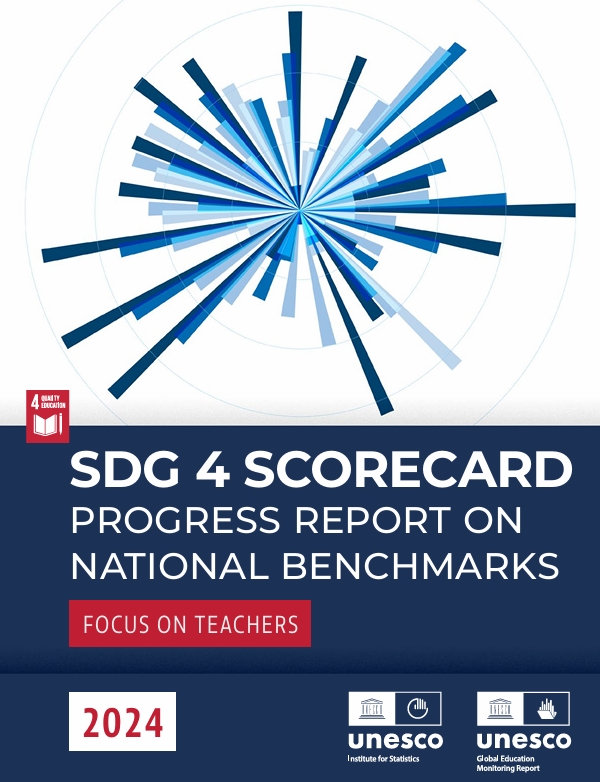By the UN Girls’ Education Initiative (UNGEI), GEM Report, Fri 4 May 2018
The ‘gender gap’ is a worldwide phenomenon usually associated with deep rooted inequalities that hold women and girls back across many spheres of life. However, in the context of education it has evolved to mean different things in different parts of the world. With 15 million girls of primary school age predicted to never even get the chance to learn to read or write compared with 10 million boys, the spotlight has rightly focused on girls in the poorest regions, such as sub-Saharan Africa, where for too many education remains out of reach.
Yet, globally, of the 264 million children and young people out of school, half are boys. In light of this, the recently published Global Education Monitoring Report (GEM Report) Policy Paper (35), calls attention to less acknowledged disparities in regions where the gender gap is at the expense of boys. Research points to an emerging trend that when gender parity in enrollment has finally been achieved in basic education, in many countries it is girls who are staying in school longer and outperforming boys at secondary and tertiary level.

Why the gender gap reversal matters
In light of the multiple and compounding barriers girls have historically faced in accessing education, should the gender gap reversal not be a cause for celebration? With women faring worse in almost every other sphere, most notably the labour market, why should the disadvantage of boys in education in some regions be a reason for concern? In short, because failure to address the low educational attainment of boys can have grave consequences not only for their own wellbeing, but for that of women and girls too. Furthermore, as one of the most powerful catalysts for gender equality, education can play a critical role in empowering both girls and boys to challenge discriminatory norms.
Evidence of the gender equality dividend to be gained through boys’ progression in school can be seen in findings from the International Men and Gender Equality Survey (IMAGES) carried out across four continents. Where men with higher levels of education were more likely to support gender equality and live it out in their lives, less educated men were reported to be more likely to perpetrate physical and sexual violence, and less likely to participate in child care, or be tested for HIV.
Thus, to accelerate progress towards a gender just society we cannot afford to neglect boys in the pursuit of inclusive and equitable quality education for all. To address the disadvantage of boys, as seen in the significant number failing to progress through and complete secondary school in regions such as Latin America, Southeast Asia and the Caribbean, we need to understand the root causes of disengagement and drop out.
The GEM Report paper points to two broad factors, both of which are underpinned by prevailing gender norms. Firstly, as with girls, poverty is a major cause of marginalisation for boys of school-going age. Research suggests that in many countries in Latin America and the Caribbean, norms of masculinity that emphasise the breadwinner role, combined with opportunities for adolescent boys to obtain unskilled work which does not require completion of secondary school, can lead to pressures to drop out. Secondly, because schools reflect the gender norms of wider society, discriminatory practices are frequently replicated in the learning environment through teaching approaches that reinforce gender stereotypes, peer pressure, entrenched violence and more. All of these issues can increase boys’ disaffection from school.
Harnessing education to realise the gender equality dividend
 Unlike female disadvantage, male disadvantage in education is therefore not as likely to be an outcome of structural or historical marginalisation. Rather, it is largely a product of gender norms, attitudes, and behaviours that condition boys’ identities and impose social expectations upon them. As spaces in which established gender norms can be absorbed and moulded, schools present challenges and opportunities for educators to help reframe notions of masculinity among boys. By exposing boys to new ideas that challenge established gender norms, learning outcomes can be improved, thereby increasing the potential for progression towards a more egalitarian society.
Unlike female disadvantage, male disadvantage in education is therefore not as likely to be an outcome of structural or historical marginalisation. Rather, it is largely a product of gender norms, attitudes, and behaviours that condition boys’ identities and impose social expectations upon them. As spaces in which established gender norms can be absorbed and moulded, schools present challenges and opportunities for educators to help reframe notions of masculinity among boys. By exposing boys to new ideas that challenge established gender norms, learning outcomes can be improved, thereby increasing the potential for progression towards a more egalitarian society.
The GEM Report paper highlights a number of participatory group education programmes such as the Gender Equality Movement in Schools and Promundo’s Programme H designed to encourage students to critically examine, question and challenge norms and power relations that underpin gender gaps. Embedded within a gender-equitable school environment, research indicates that such initiatives can contribute to cultivating principles of gender equality in students, which, in turn, challenge assumptions about the ‘naturalness’ of gender roles.
For decades, the global education community has focussed on the barriers faced by marginalised girls in the Global South, and the tremendous benefits that would accrue if all girls could access the education they need. Too little attention has been paid to the benefits of ensuring boys also remain in and continue through secondary school. To accelerate progress towards gender equality in and through education, as the GEM Report paper advocates, we cannot afford to forget boys. While not losing focus of the structural issues that keep too many children out of school, a key priority must be to develop gender-responsive learning environments and curricula which help students acquire the critical thinking skills that foster a more egalitarian worldview. In this way the gender equality dividend of education can finally be realised.






